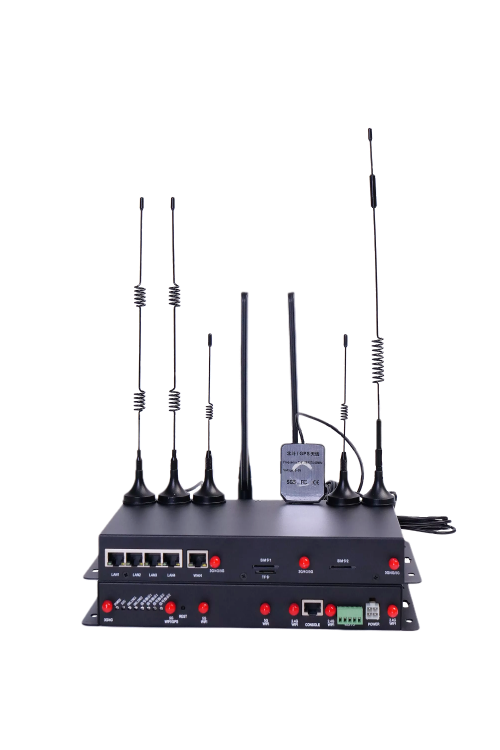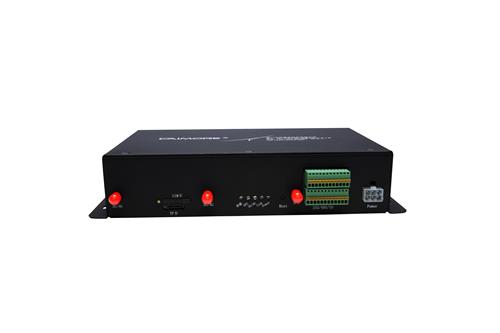Photovoltaic inverter remote control application scheme
Time:2021-06-05 Source:1. Introduction
As a new industry that uses solar power to generate electricity, the photovoltaic industry has the advantages of safety, reliability, noiselessness, low pollution, no fuel consumption, and short construction period compared with traditional power generation methods. Therefore, it is valued by countries all over the world. China has become the world's largest producer of photovoltaic power generation components and accessories, and the industrial scale of all aspects of photovoltaic power generation has maintained a momentum of rapid growth.
With the large-scale development and utilization of new energy in the domestic market, the photovoltaic industry has become increasingly mature. Public data shows that in 2020, the newly installed photovoltaic capacity will be 48.2 million kilowatts, an increase of 60.1% year-on-year, showing an explosive trend. With the rapid growth of domestic photovoltaic installations, it has brought new challenges to the grid connection and consumption of the grid system. Because photovoltaic power stations are mostly built in the northwestern region, they occupy a large area, and the distribution topography is complex and diverse, and the storms and snowy weather are bad The problems have gradually become prominent, coupled with the high failure rate, large power loss, low power station efficiency, and difficulty in operation and maintenance management, etc., these have brought many risks and challenges to the subsequent management and development of power station assets.
In order to achieve efficient monitoring of distributed energy, meet the requirements of power access to the grid, rational deployment, centralized monitoring, grid analysis, distribution network automation and routine maintenance, etc., Caimore Communications launched the intelligent control operation of photovoltaic power plant inverters. The maintenance solution connects the power transmission monitoring remote center with the on-site photovoltaic power generation controller using a highly reliable secure encrypted tunnel to realize remote management of photovoltaic equipment and collect relevant data, improve the operation and management efficiency of distributed power generation, and reduce production operations And equipment maintenance costs.
2. System function
The system consists of photovoltaic power generation components, combiner boxes, inverter data collection tools, Caimore 4G routers, and cloud platform servers. The data collected by grid-connected meters, inverters, and combiner boxes are transmitted to the power generation service center through a 4G router. The industrial router is connected to the on-site photovoltaic equipment through a serial port or an Ethernet port, and the operating status of the flow controller is transmitted through TCP/IP. Transfer to the center of the remote monitoring platform. In order to ensure the reliable operation of the system, the Caimore router is used to maintain the patented technical functions online to ensure that when the network is abnormal, the device can automatically reconnect and restart to ensure that the network link is unblocked and the system can still operate stably. The service system communicates and interacts, so as to realize the remote management and operation of distributed photovoltaics, realize remote diagnosis, management, analysis and control services, and help power operation companies optimize system operations and improve efficiency.

3. System advantages
1). Through the system interface configuration, the real-time transmission of power station operating data can be quickly and comprehensively realized.
2). Realize online remote monitoring of real-time data of photovoltaic power station combiner box, inverter, power, power generation and so on.
3). Comprehensive real-time monitoring of the operating status of the equipment in the station, analog quantity, status quantity, electrical energy, etc.
4). Equipment failure monitoring, power plant environmental indicators, real-time monitoring of alarm information, effective classification management of operational alarm events, real-time alarms, and intelligent processing.
5). The system supports multi-user online monitoring and authority management, with clear rights and responsibilities.
6). The system provides report functions commonly used by operators, and provides functions such as daily, monthly, and yearly report management, message configuration, and system configuration.
7). Provide customer customized services: reserve secondary development interfaces to meet customer specific function development.
4. photovoltaic inverter
Photovoltaic inverters are inverters that can convert variable DC voltage generated by photovoltaic (PV) solar panels into alternating current (AC) at mains frequency, which can be fed back to commercial power transmission systems or used by off-grid grids. Photovoltaic inverter is one of the important system balance (BOS) in photovoltaic array system, and it can be used with general AC power supply equipment. Solar inverters have special functions to cooperate with photovoltaic arrays. Photovoltaic inverters are one of the main components of photovoltaic power generation systems. Connecting photovoltaic square arrays to the grid is the key to ensuring long-term reliable operation of photovoltaic power stations and improving project investment returns. The country advocates the concept of “adapting measures to local conditions and scientific design”. According to factors such as the scale of the photovoltaic power station, attached buildings and topography, the type of inverter should be reasonably selected to ensur the maximum value of the photovoltaic power station during its entire life cycle.
1). Flexible networking support RS485, Ethernet, WLAN communication, WIFI support multiple environmental sensors, electricity meters, weather station equipment access
2). Auxiliary operation and maintenance
Support batch parameter configuration and software upgrade of the inverter
Support remote desktop function, reduce operation and maintenance costs
Automatically search and assign inverter addresses to facilitate on-site debugging
Support grid control commands and power factor control
Support local real-time monitoring, no need to connect to wired network
5. Advantages of Caimore 5G/4G Router
1). The device is loaded with online maintenance patents, intelligent anti-dropping, support for online detection, online maintenance, and automatic redial when dropped to ensure that the device is always online.
2). Passed the Ministry of Industry and Information Technology's network access license, national 3C, Moore high and low temperature testing certification, CE certification, FCC certification, E-Mark certification, and ROHS certification to adapt to the global scope;
3). Industrial-grade high-performance embedded processing, high-speed data cache, speed up high-speed data access, high-speed instruction cache, and strengthen instruction processing speed;
4). Support VPN security tunnel function, including PPTP, MPPE, L2TP, GRE and IPSEC, fully guarantee data security;
5). It supports timed online and offline functions, and the device can be set to go online and offline within a certain period of time.
6). There is remote management supporting system platform software;
7). Support QOS bandwidth management, DHCP/DHCPD function, support port mapping NAT function, such as SNAT, DNAT;
8). Support bandwidth management, uplink and downlink speed limit, total bandwidth speed limit, user sharing mode;
9). Support serial port DTU function;
The entire system supports a complete set of management services for data collection, power station monitoring, and operation and maintenance of new energy power stations such as photovoltaics and energy storage. Through the cloud big data analysis platform, it helps users achieve core functions such as transparent management, automated operation and maintenance, intelligent diagnosis, and decision-making assistance for all new energy power plants under its umbrella. Fully meet the needs of users at all levels in the life cycle of new energy power stations, maximize the value of power stations, and protect users' core assets.






